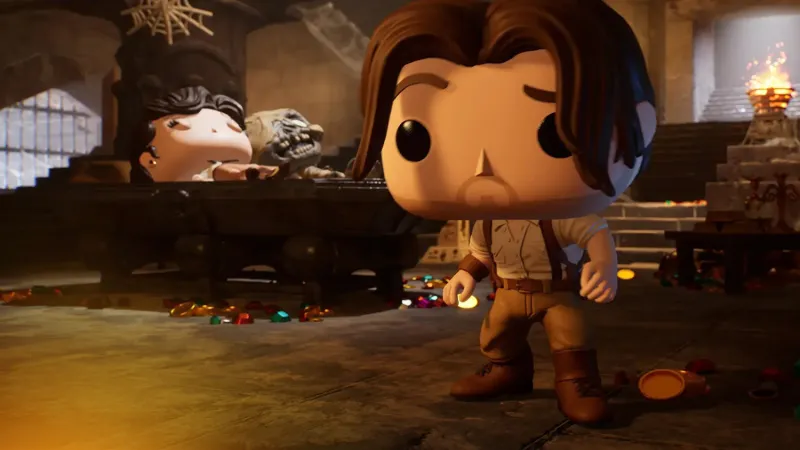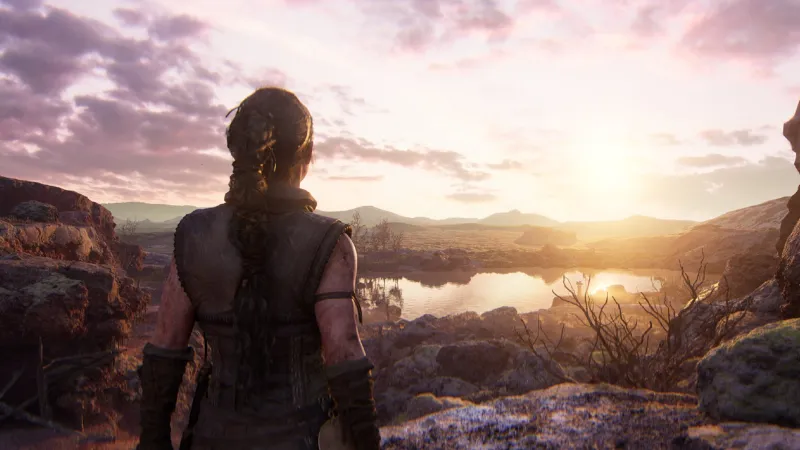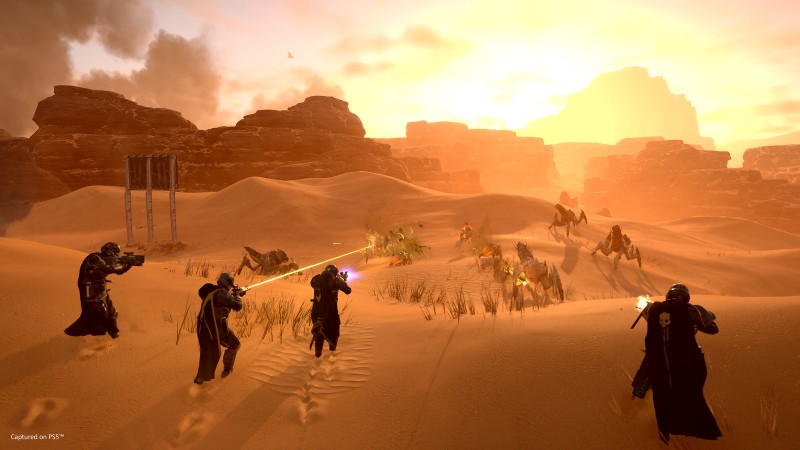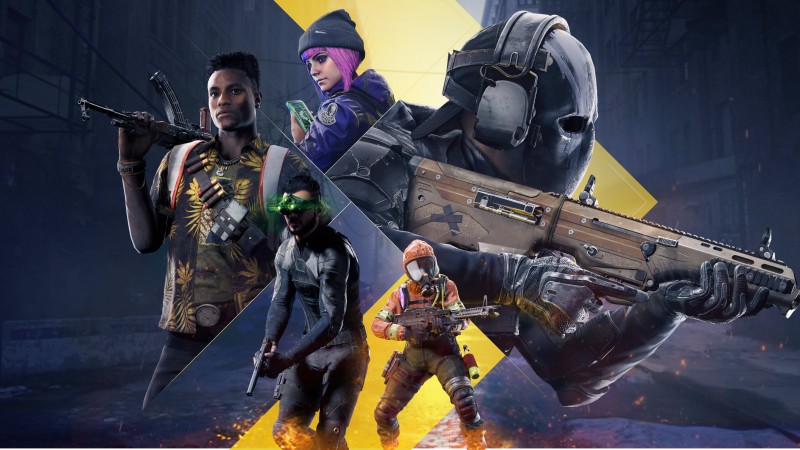The revival of this long-dormant franchise moves into the gear-and-power-gated family of games colloquially termed Metroidvanias, thanks to its similarity to early classics like Super Metroid and Castlevania: Symphony of the Night. It’s a genre that has been gaining traction in recent years, but Ubisoft’s return to the Prince of Persia franchise is one of the best we’ve seen in a long time. It's even managed to make a spot for itself on our list of the Best Metroidvania Games you should make a point to play.
The Lost Crown is also notable for the way it advances this game style with novel ideas and mechanics. While not everything on this list is brand new, these features combine to make Ubisoft’s new adventure one of the most rewarding, approachable, and satisfying releases in the genre, and an early standout release at the beginning of 2024.
All About The Map
Early games like Super Metroid offered a large map for exploration, but much of it was unavailable until you had additional capabilities. That defining feature of the genre is present in The Lost Crown, but it allows clever players to leverage several in-game systems to reduce aimless wandering and instead keep the focus on interesting encounters and puzzles.
The most significant way it does that is through Memory Shards, which let players capture a screenshot of a specific location they’re standing in, and that screen then appears on the main map, viewable just by scrolling over it. It’s a simple but extremely helpful tool that resembles common jigsaw puzzle techniques. When you find a puzzle piece with an unusual or notable shape or image, you set it aside and wait to find its match. Here, you locate a particular insurmountable obstacle and set it aside until you have the matching power to surmount it.
On top of that, The Lost Crown’s map supports thoughtful and customizable navigation, such as distinct markers a player can put down to indicate different targets, as well as a choice between exploration and guided mode. The latter lets players see where the subsequent major story-progressing sequences are but doesn’t tell you how to get to them; the fun of discovery is still there, but it’s not as aimless or as dependent on in-world clues as exploration mode.
The game also adds a simple but surprisingly helpful tool around save points. In many games of this style, a wrong turn can mean that you miss a critical save point by turning left when that desperately needed save point was to the right. In Prince of Persia: The Lost Crown, a clearly identifiable golden wind appears in nearby chambers that lead to a save point, helping ensure you don’t miss it. It’s a meaningful aid and takes away an element of frustration and difficulty that was never really an enjoyable aspect of the genre.
A Consistent And Uniting Theme
Prince of Persia games have always been about the concept of time in one way or another, but The Lost Crown takes that focus to a new level. By making the entire game – from storytelling to mechanics – focus on the nature of time, the totality feels united and compelling.
Sargon’s journey across Mount Qaf sees time constantly in flux, with story elements suggesting that time is both mutable and can change based on our perception of it. But rather than just discussing that concept in the storytelling, the entire game revolves around time. Your powers are all about the manipulation of time and space. Distinct areas across the map play with unusual twists on time – from day and night cycles to dramatic frozen moments. Even combat and traversal rely heavily on careful observation and timing to find any measure of success.
The result is a game that feels like it’s communicating a cohesive theme across all its facets.
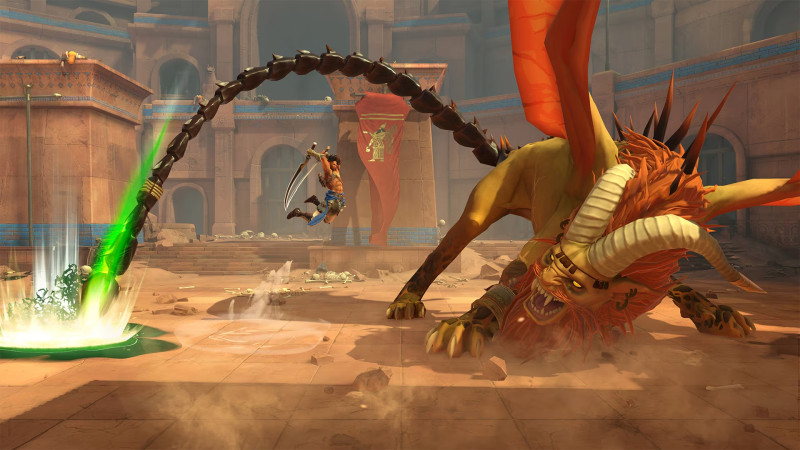
Focus on Precision
Exploring a vast open map, backtracking to earlier locations, and solving navigation challenges are all concepts that appeal to a mindset of careful observation and thinking. So why would a game like this also veer into imprecise and wild approaches to action? Prince of Persia: The Lost Crown keeps precision play a staple across all elements of gameplay.
Combat in the game is always about watching your enemy and reacting intelligently to their attacks. Mastery of parries, dodges, dashes, and jumps is as crucial as any sword or bow attacks you might wield. The combat provides a refreshing and challenging approach, with regular injections of new attack and defense options, an increasingly complex array of enemies to parse, and bosses that demand careful use of available powers.
Likewise, traversal sequences are often about extremely precise button presses to avoid Mount Qaf's many traps and dangers. After decades of playing games, it’s rare that a puzzle or navigation area feels genuinely new or surprising to me. But Prince of Persia: The Lost Crown frequently provides that sensation, with tricky moments that left me smiling at the clever structures.
From a design perspective, the game also uses its play spaces with precision. If a room is large and open, there’s often a reason for it, encouraging players to attempt to reach its furthest and highest corners. If a combat chamber is tight and constrained, it forces the player to leverage every ability to confront an enemy’s capabilities.
The insistence on precision increases the sense you’re playing a game that demands attention and observation at every turn – there’s little in the way of boring moments since every action, reaction, and direction you move has a purpose and the threat of danger.
Accessible to All
Increased attention on accessibility for all players has been a big focus for game developers in recent years. It’s been incredible to see game makers working hard to make their games playable and enjoyable by the largest percentage of players. In this arena, Prince of Persia: The Lost Crown leads the genre of Metroidvania titles in many ways.
High-contrast visual mode options ensure aid for players with specific color blindness and other low vision needs; The map tracking and memory shard feature helps players with visual memory issues; A platforming assist option lets players jump past the most complicated traversal sequences with a unique portal system; Combat difficulty can be fully tweaked to make timing windows more generous, add additional aim assist, and more; Controls are globally remappable; Subtitles have numerous adjustable options for those with hearing issues. With these and other features, Prince of Persia: The Lost Crown keeps the game rewarding for a broad swath of potential players.
Importantly, these accessibility features are entirely optional and changeable at your desire. Beyond the inherent value of opening up the game to the players who need these options, everyone should feel good about these types of inclusions, especially as they make their way into genres (like these types of Metroid-inspired games) that have sometimes not featured the options. More players of a good game helps developers and publishers find success. In turn, those additional paying customers make it more likely that good games and developers will continue to make more games. It’s a win-win-win.
Prince of Persia: The Lost Crown is a return to a venerable franchise, but the game’s shift into a new style invigorates the series and makes it feel new again. Not only is it a great game, but it also sets some high bars for several innovative elements, which other developers within the space would be wise to emulate. If you haven’t already put the game on your radar as an early play in 2024, it deserves serious consideration.

 3 months ago
104
3 months ago
104
